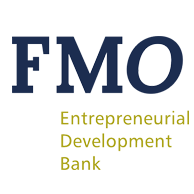


Forests hold the key to a thriving planet, and finance can unlock their potential. Through the Mobilising Finance for Forests (MFF) program, we're channeling private capital into sustainable forestry to protect biodiversity, restore ecosystems, and deliver lasting benefits for people and nature—backed by a recent evaluation that highlights how finance can drive measurable, positive impact for biodiversity.
The Mobilising Finance for Forests (MFF) program is dedicated to mobilizing private capital into the forestry and sustainable land use sectors. MFF was launched in 2021 with support from the UK government together with FMO; the government of the Kingdom of the Netherlands joined in 2024 as a second funding partner. By investing in companies and funds that add value to, protect, and restore forests, the program aims to generate strong co-benefits for society and biodiversity. Biodiversity protection is a core ambition of MFF's theory of change and has gained significant importance among development finance institutions (DFIs), governments, and society. Moreover, one of the key goals of FMO's Strategy 2030 is to "increase investments in biodiversity." To achieve this, FMO updated its “green label” (meant to direct funds towards investments which contribute to environmental goals) to specifically include investments that contribute to the restoration, protection, and development of biodiversity and ecosystems. One such example is the S.A. Impact Forestry Fund, a private equity fund dedicated to sustainable forestry which reserves at least 25% for conservation and restoration activities.
We commissioned the consultancy firm Trinomics to do a study on behalf of MFF to create an evidence base that enhances our understanding of finance's potential to positively impact biodiversity. It seeks to identify investments and interventions in the forestry and sustainable land use (FSLU) sector that can contribute positively to biodiversity, and to determine how this impact can be assessed, quantified, and monitored.
A peer review showed that biodiversity is increasingly considered an important topic by DFIs and MDBs, although few have specific biodiversity objectives. Around half of the sample has a biodiversity strategy or action plan, but the subject is not as integrated than climate change. Most frameworks focus on risks/negative impacts rather than net positive outcomes. Biodiversity measurement and monitoring of positive impacts are key issues among peers, with several initiatives under development.
Currently, there is no single indicator that can fully capture the biodiversity or nature-positive impact of MFF or FMO activities. Instead, customized sets of indicators should be developed based on the specific location and type of activity. While there are many freely available tools that offer general environmental context or help assess nature-related risks across regions, they are not designed to measure detailed impact. Building a meaningful framework for tracking nature-related outcomes will require time and substantial resources. Taxonomies play a critical role in nature finance—they help financial institutions and their investees identify which activities qualify as nature-positive and enable consistent tracking of environmental impact across investment portfolios.
A combination of advanced technologies and simple on-the-ground approaches seems to be the winning strategy for monitoring positive impact. Advanced technologies like eDNA and Internet of Things (IoT) sensors offer precise biodiversity assessments but remain costly and resource-intensive. Nevertheless, the study includes stakeholders which have successfully implemented technology such as IoT sensors in their large-scale restoration approach. Simple on-the-ground methods are more accessible but may lack scalability and fail to capture the full complexity of ecosystems. FMO’s forestry customers and other stakeholders active in the sector emphasize the need for funders to provide support for capacity building and to extend investment timeframes to achieve long-term biodiversity outcomes.
The study also explores ways to navigate seeking positive impact in addition to financial returns. Many customers and investees generate revenue from production-oriented activities such as sustainable timber, agroforestry, and certified commodities. Others derive income from environmental credits, including carbon and biodiversity credits, while those focusing on facilitation and strategic support generate revenue by connecting projects with funding and expertise. Grants and blended finance are key for de-risking projects and attracting private capital while delivering measurable nature benefits. Biodiversity credits offer a promising but complex tool for conservation financing. While they differ from carbon credits in scope and metrics, their combination in specific projects can create synergies, achieving both biodiversity and climate goals. Technical assistance (TA) supports project development, impact measurement, and capacity building, ensuring long-term financial sustainability for biodiversity-focused investments.
This study has provided valuable insights into the potential of finance to positively impact biodiversity. The findings will inform our strategy, approach, and future investments, ensuring that biodiversity protection remains a key focus. By aligning with global frameworks and leveraging a range of financial instruments, FMO aims to scale up nature finance and achieve measurable biodiversity benefits.
1 Note that this investment was done through FMO’s own balance sheet, not MFF.